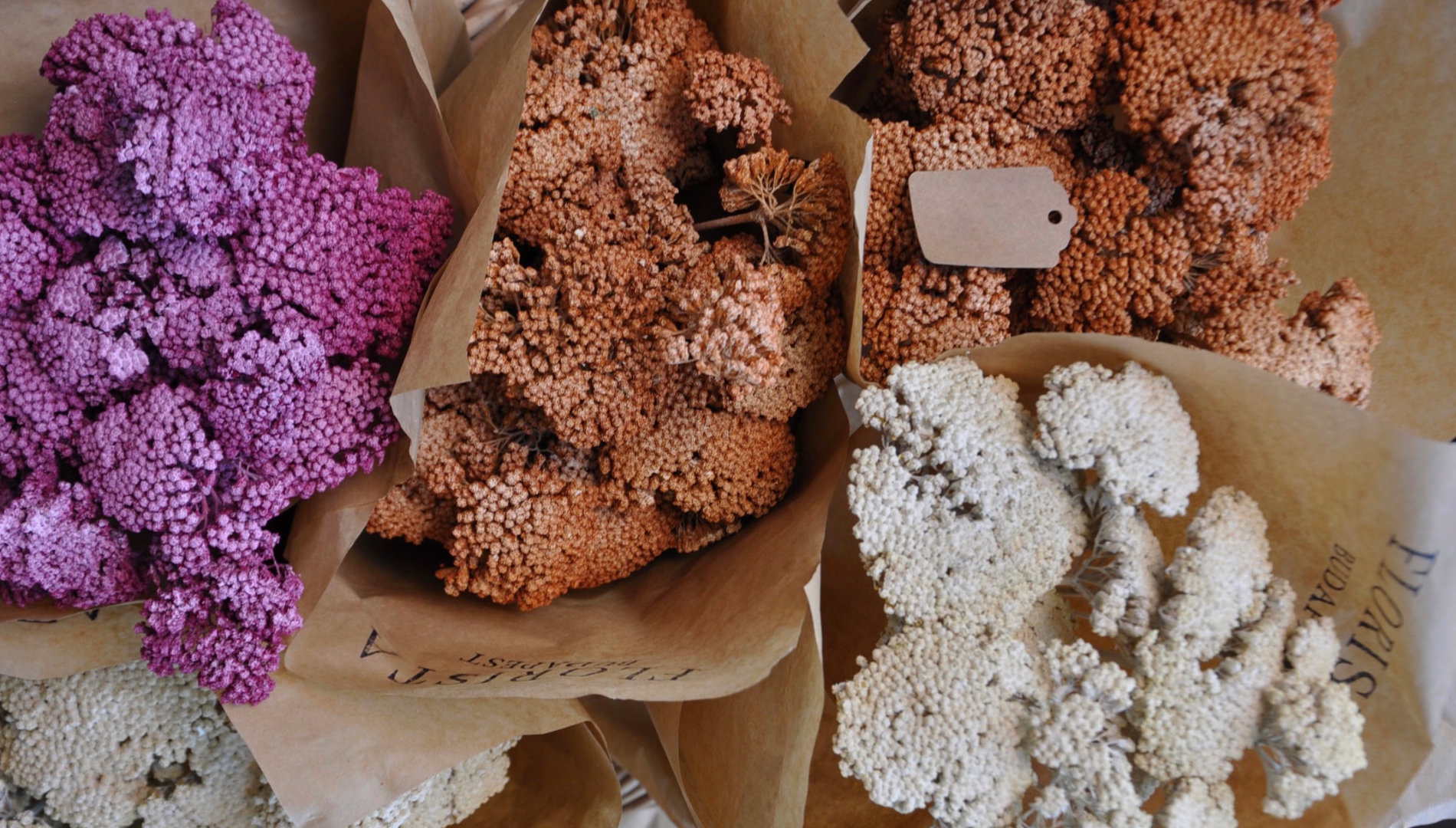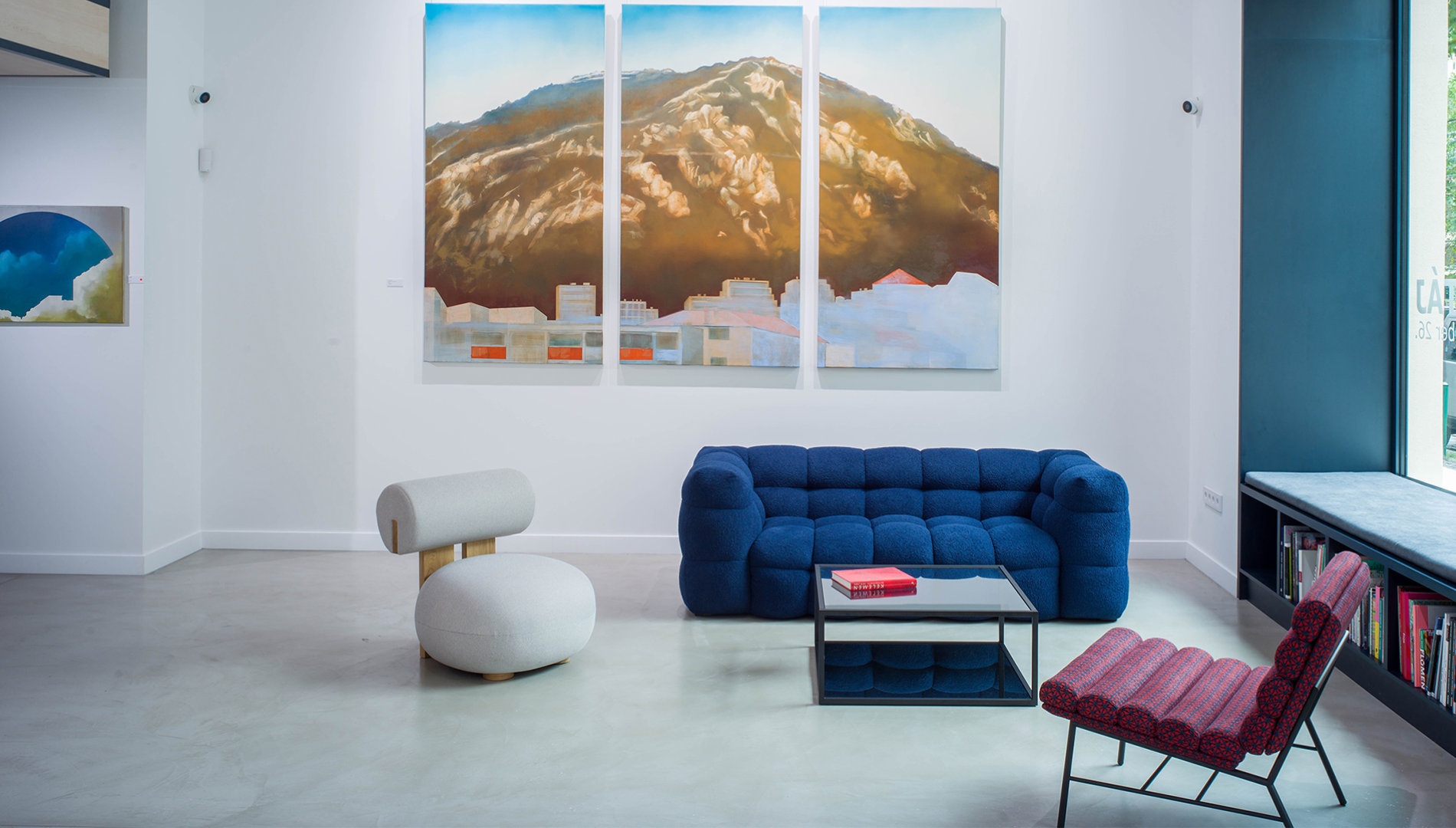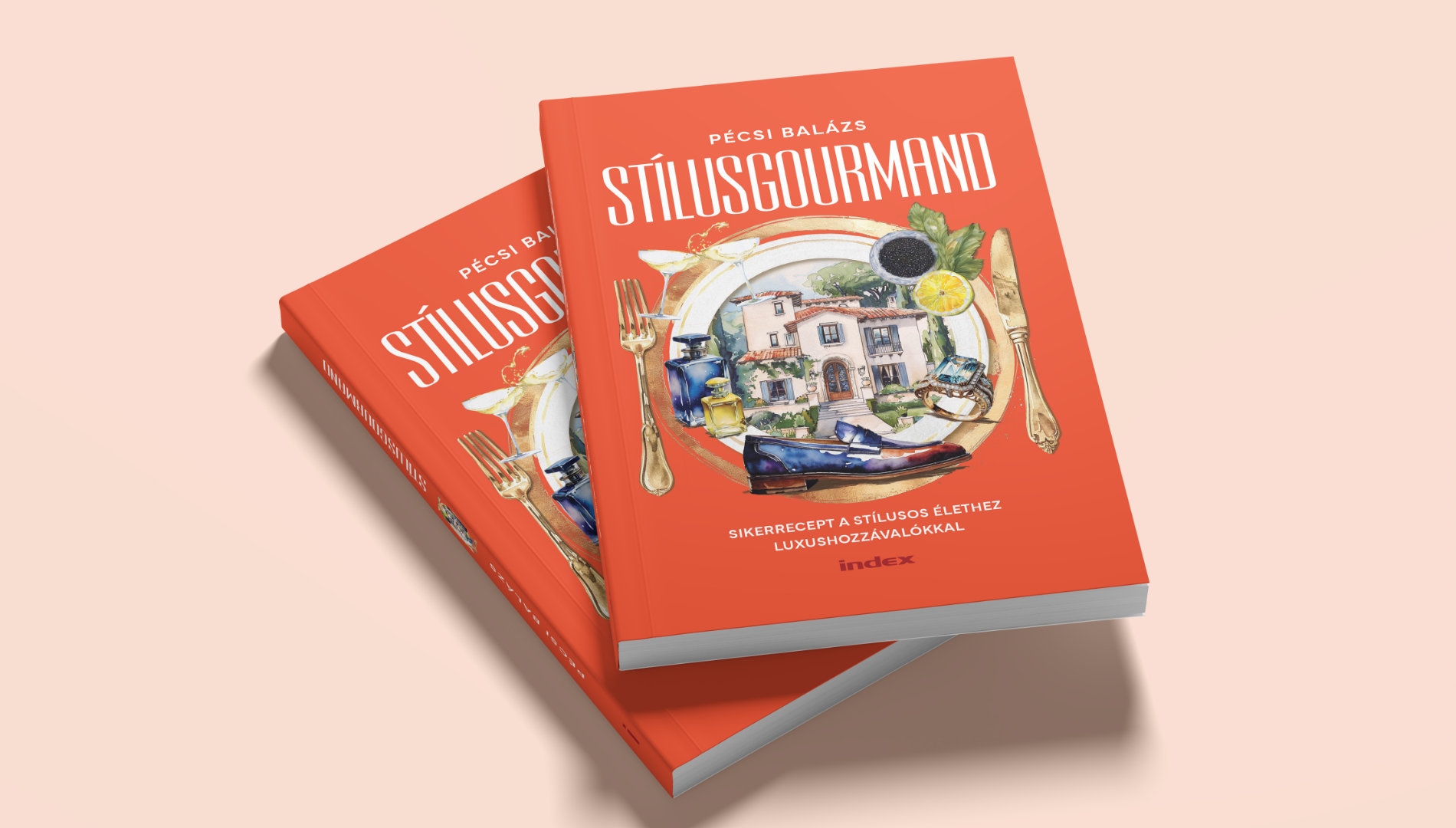
Stílusgourmand x MÜÜSKA
The Stílusgourmand style guide and etiquette book’s interior design collection makes its debut at S/ALON BUDAPEST.
In the following joint interview, we spoke with Balázs Pécsi, author of the book "Stílusgourmand" and designer of the "Millions & Billions" wallpaper, decorative cushion, and armchair collection debuting at our exhibition, as well as with Júlia Vandlik, owner and managing director of MÜÜSKA, the design brand responsible for producing and distributing the collection. We discussed their collaboration, which resulted in the Stílusgourmand x MÜÜSKA collection.

Your design brand, MÜÜSKA, which means ’little mouse’ in Russian, may seem at first glance to offer decorative home furnishings, but they fall more into the category of what is known as collectible design. Why did you head in this direction?
Júlia Vandlik: Those who know me are aware that the foundations of my personality are creativity, a visual mindset, and a sense of aesthetics (not to mention a certain degree of madness). Over the many years I spent in the advertising industry, I obviously absorbed a lot, saw a lot, and created a lot of things creatively, but I always felt an irrepressible urge to shape spaces and interiors as well. That’s why I’ve been working in interior styling for a long time – practically as a side gig – where I can indulge this passion. To answer the question, it was a combination of several factors that led me to this path. In these projects, I repeatedly experienced that no matter how vast the range of products available for interior design is, there was still a significant gap – perhaps the most crucial aspect of furnishing – where something truly unique, special, and, most importantly, expressive of the future user’s personality would be needed. This doesn’t have to be anything grand; sometimes, even just a couple of pillows with personal significance to the owner or a dominant wall can make a big difference. But a unique armchair "merged" with the work of a contemporary artist, for example, can outright dominate a space, positively determining the owner’s identity.
On the other hand, I was motivated by what I believe to be the still largely untapped potential of contemporary artists.
I wanted to find a channel, a bridge through which contemporary painting could reach a much broader audience than it currently does. It became evident that coupling contemporary paintings with functional objects could exponentially increase the surfaces through which they infiltrate our daily lives. Given the nature and concept of these pieces, I consider it fundamental that such MÜÜSKA items are only available as unique or limited edition pieces.
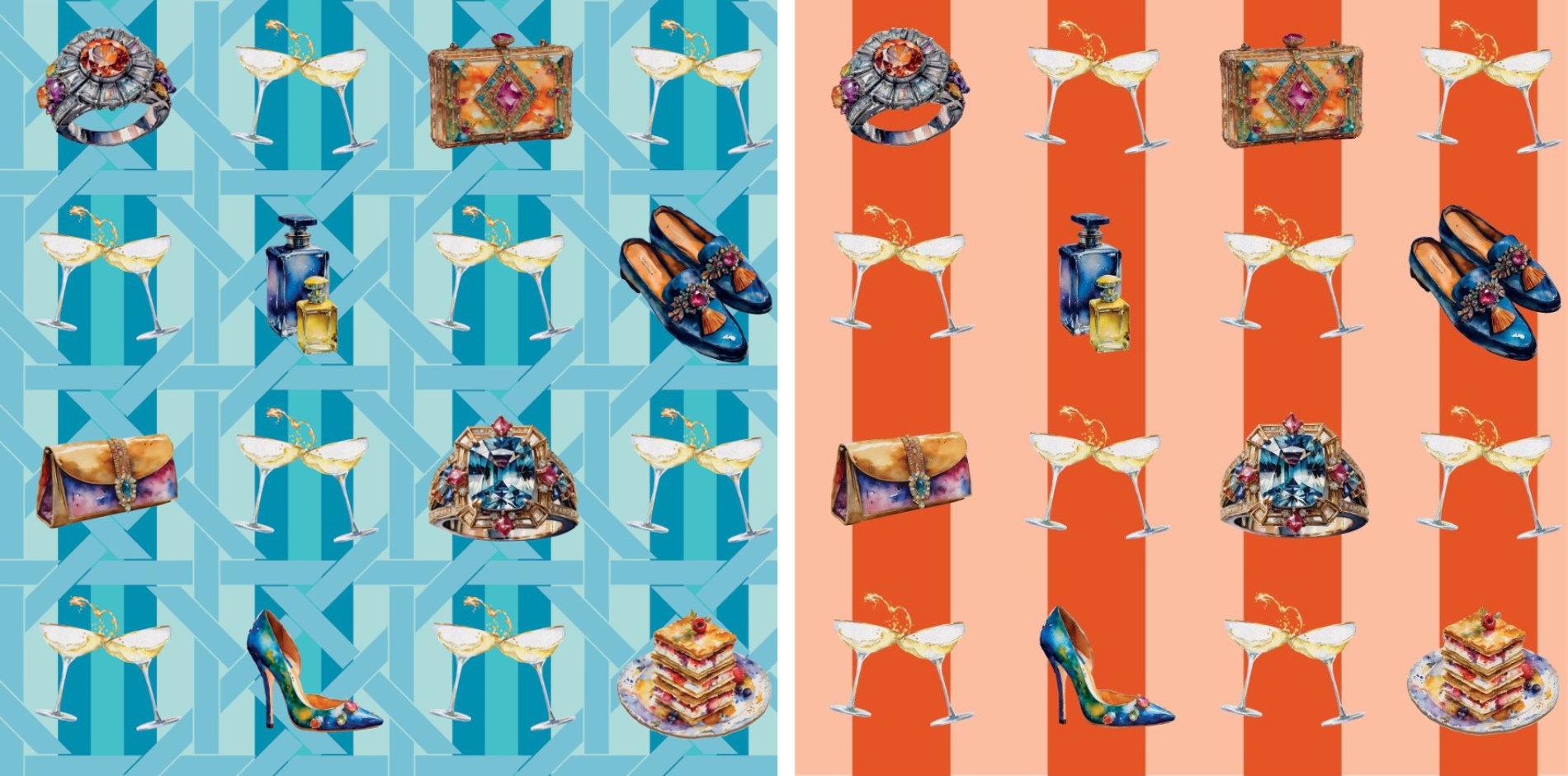
In the author’s bio of your style guide and etiquette book, "Stílusgourmand," which was released in mid-May, it says you are a luxury expert and editor-journalist, and you previously worked as a fashion and interior stylist for a decade, while also handling communication and marketing management for luxury fashion and design brands – all while blogging as the owner of The Gentleman’s Review luxury blog. That’s already a lot, and now you’re adding design to the mix. How did that happen? Was it a long-standing, bucket-list dream?
Balázs Pécsi: I wouldn’t say it’s a completely new field for me, since I started my career 17 years ago after high school, alongside university studies, as a decorator and designer (and product photographer) at the Kreatív Hobby retail chain. Several of my mini-collections were released, including visually striking felt bags embroidered with beads and felt and foam jewelry decorated with marabou feathers and beads, both under the KH Design brand and my own name. This sub-brand of the company sells kits that contain all the materials needed to create a product designed by the designer. Since the owners soon appointed me as the artistic director of the retail chain (in addition to being editor-in-chief of their online creative craft magazine in collaboration with Libri), I later didn’t have time for this work due to managerial and editorial tasks. Still, it was enough for me to learn the design process (even if there was no manufacturing involved here, as that was up to the customer; my job was to draw the pattern and write the instructions). Wallpaper or cushion production is a completely different register; I won’t say that I didn’t need to adjust to it – I admit, for example, I had never heard the word "piping" before, even though I spent nearly four years at Kreatív Hobby, and later edited the DIY column in several women’s magazines. So it was an interesting learning process, and I’m glad I gained more knowledge through it. To answer the specific question, while I wasn’t waking up and going to bed with an unquenchable desire to become a designer, one does play with the idea of trying oneself out in this field – especially if a significant part of one’s career has involved writing about designers and their new collections or styling properties to make them publish-ready.k jó részét azt tette ki, hogy designerekről és az új kollekcióikról ír, vagy ingatlanokat próbál publikálásra alkalmas formába hozni, feltuningolni.
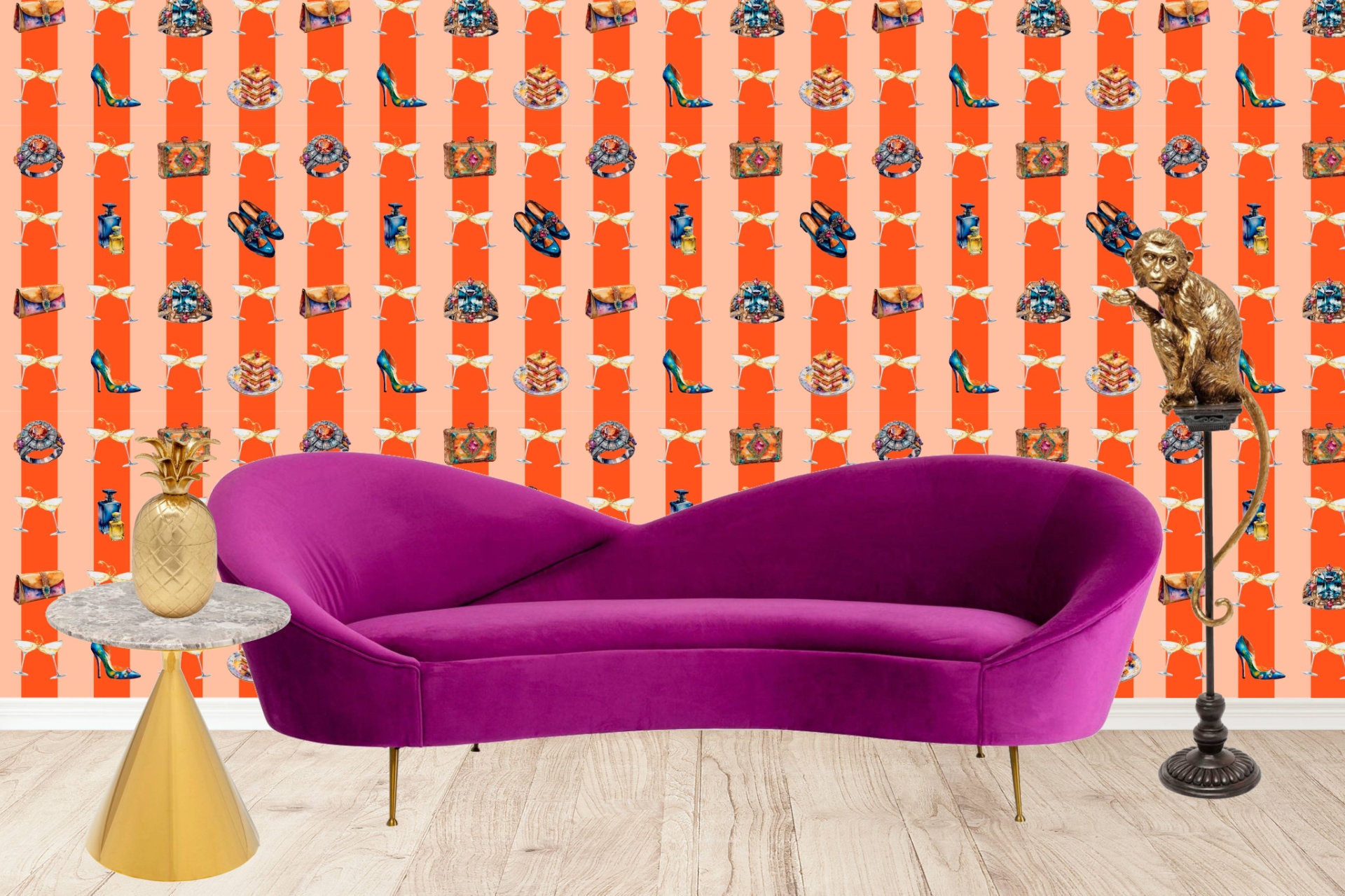
You’ve only collaborated with visual artists in the past; why did you make an exception now with Balázs Pécsi and Stílusgourmand?
Júlia Vandlik: The MÜÜSKA philosophy remains about what I explored in the previous question, and in that spirit, the primary goal and product concept have not changed, which is to work with validated international artists.
Balázs’s project is a special exception, a kind of tribute from us to his personality, work, incredible knowledge, and the values within him.
His approach and his collaboration with AI, resulting in the very distinctive illustrations for the Stílusgourmand book, clearly do not fall into the above category. However, the shared point, the aspiration for "something different, beyond trends," resonates well with us, which is why we decided to proceed with it and release this unique collection together.
How does such a collaborative process work? How does a piece of art, or in this case, a pattern, become wallpaper, a decorative cushion, an armchair, or even a rug?
Júlia Vandlik: Creating and producing these products is a synergistic process that begins with the artist, who serves as the muse and inspiration for a new piece. Once a decision is made on the specific form/function for the given artwork, a three-dimensional visual plan is created. If this is satisfactory, we move on to our manufacturing partners. In the case of our special antique armchairs, we work with selected restorers and upholsterers; for limited edition new furniture, we turn to our bespoke furniture makers; our wallpapers are produced by Tapétagyár, while for cushions, textiles, and rugs, Printextil is involved in the manufacturing process.
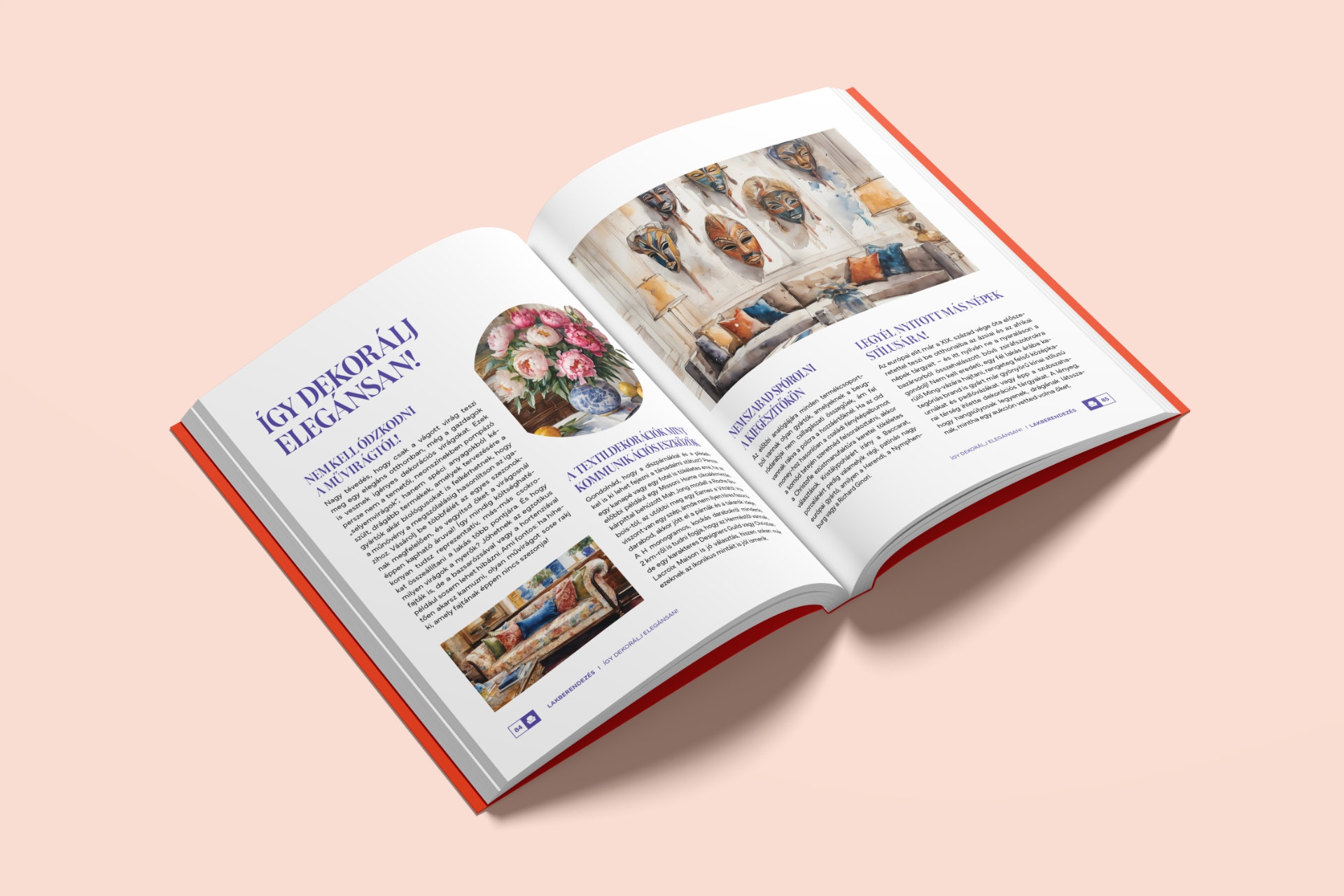
How can a book inspire a wallpaper or cushion, or even an armchair?
Balázs Pécsi: Books can inspire many products, although, in most cases, these are publications that have also been made into movies or cartoons. This is because consumers are attracted to familiar characters and branding, which prompts them to buy the product – this is further facilitated when these are based on popular and widely known fictional stories.
Our case is completely different; this book is a self-development/self-help guide where I’ve put a lot of advice across 80 chapters on topics like fashion, interior design, gastronomy, etiquette, and other lifestyle themes.
At the same time, it is paired with a very distinctive visual style created with the help of artificial intelligence. With nearly 300 colorful and stylish images featured in the book, there was plenty of material to draw from on this front, so it made sense to transfer these onto wallpapers, velvet textiles, or paper with metallic foil. But this is not the first unusual collaboration for Stílusgourmand; until the end of the month, you can also try the Stílusgourmand Aperitivo, inspired by the book, at the cocktail bar of the Kempinski Hotel Corvinus Budapest, the Blue Fox The Bar. This offering includes two cocktails, a non-alcoholic mocktail, and bites inspired by southern Italian gastronomy – and, without bias, they are indeed delicious. We even wove the story of Beatrice of Aragon, Queen of Hungary and key figure in the spread of the Renaissance in Hungary, into the gastro-offer. But there was additional inspiration besides the book for the collection with MÜÜSKA.
For the interior design collection, you turned to Southern Italy again; why does this region inspire you so much?
Balázs Pécsi: I won’t deny it: I’m a big "Italophile" – Italy is my passion, no matter the dose. Since childhood, I’ve traveled there frequently, and I’ve kept up this good habit into adulthood. While there are still blank spots on my map, I’ve covered a fair bit of the Apennine Peninsula. The Campania region, in particular, holds a special place in my heart. This is partly because my father’s family moved to Naples for a while during my high school years, and I spent all my school breaks there. The collection is also heavily inspired by the nearby island of Capri, where, even as a teenager, I was enchanted by its natural beauty, villa architecture, and luxury boutiques. It was there, in fact, that I decided I wouldn’t become an Egyptologist – a path I had been preparing for over many years – but rather that fashion, design, and their relationship with luxury were what truly interested me. So, here’s another connection with the book: if that shift in my thinking hadn’t happened there, I might not be in this industry today and instead might be somewhere along the Nile, carefully cleaning artifacts with a brush. I’m absolutely captivated by Capri and other Italian luxury towns – such as Portofino in Liguria or Porto Cervo in Sardinia – and I love going back to them. These towns are synonymous with chic travel and vacations, especially in the 1970s when they were frequented by world-famous stars and sophisticated style icons like Jackie Kennedy/Onassis, her sister Lee Radziwill, Grace Kelly, Maria Callas, Sophia Loren, and Elizabeth Taylor, all drawn to these locations for relaxation due to their elegant styles and associations with luxury brands. Elements of the characteristically bold, colorful sets of the 1970s, the prominent gemstone jewelry or costume pieces, the attributes of tasteful flamboyance – all of these appear in the watercolor-like AI graphics of our patterns, where I’ve mixed in the stylized octagonal weave pattern of the bamboo/rattan peacock chair, which became an iconic piece through the cult film Emmanuelle in 1974. The striped design was inspired by Ligurian church architecture, a classic motif of summer, and it was also a goal to ensure that certain colorways appear particularly fresh and vibrant.
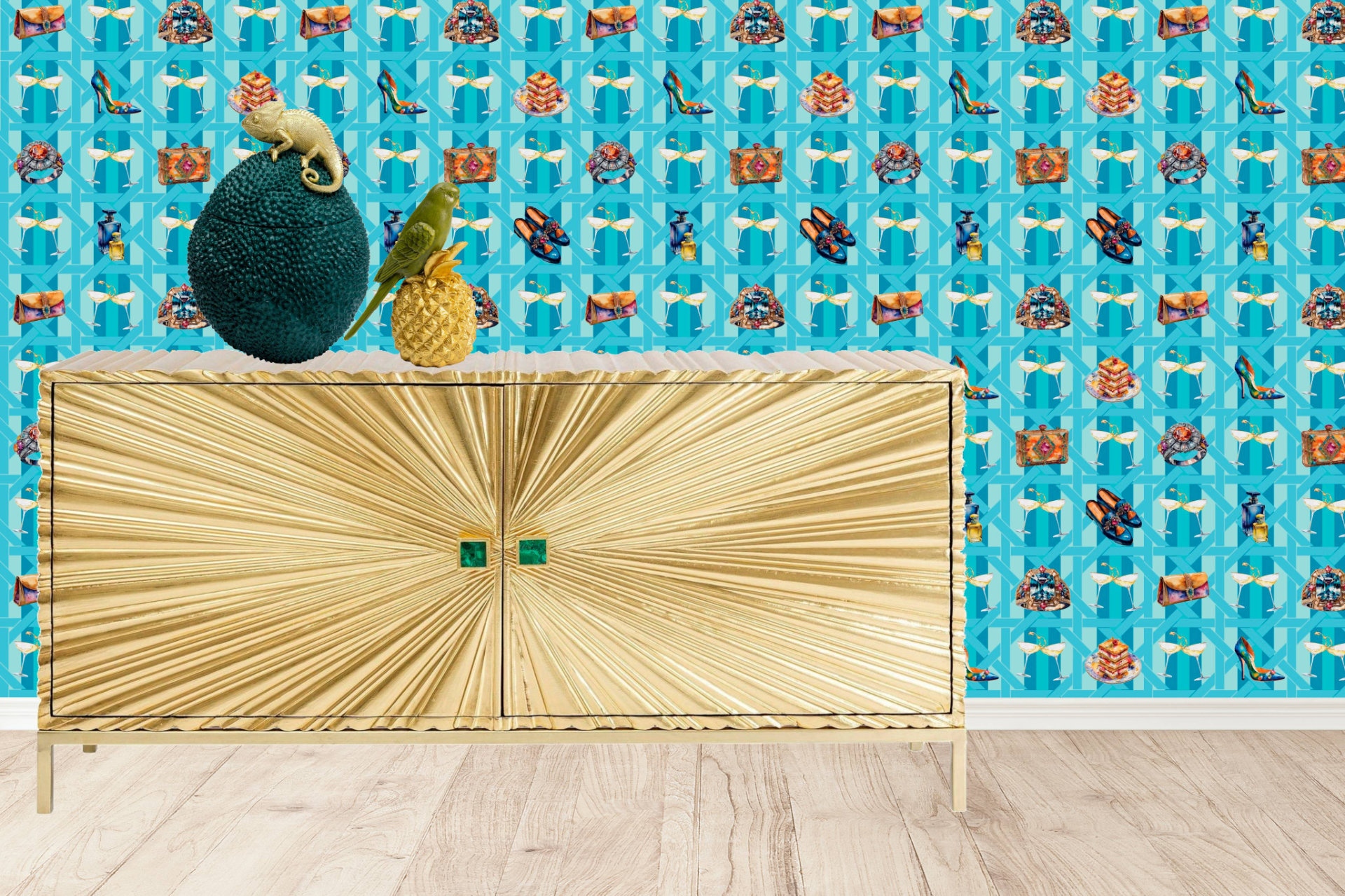
Were there any manufacturing challenges with this collection that were particularly difficult to overcome?
Júlia Vandlik: The number of products and variations was what made the process more complicated. Beyond the fact that three different types of products are being produced simultaneously with different manufacturers—wallpapers, cushions, and extravagant, throne-like armchairs—the complexity of the patterns and the combinations of colorways mean there are 30 different versions just for the wallpapers alone. To this, we add five different cushion patterns and three types of armchair designs. What is now the complexity for us will actually become one of the collection’s distinctive features and strengths—the endless possibilities for variation.
You are showcasing some wallpapers from your collection for the first time as a preview within this interview. Their style is quite distinctive; where would you recommend placing them?
Balázs Pécsi: Well, anyone who knows me knows I’m not a huge fan of minimalism – although I absolutely recognize its merits. I’ve never really been able to connect with this trend in interior design or fashion, probably because many use it as a safe bet. Of course, that’s not the aesthetic movement’s fault, but for me, it somehow became synonymous with playing it safe and boring. When I was the editor and stylist for interior design magazines – like Polgári Otthon or Lakáskultúra – I had to tackle tasks in every style, and even when styling a rustic or minimalist home, my supervisors were satisfied with my work. But it was clear to them as well that I am most effective with over-decorated, exciting, and eclectic spaces – that’s where I truly thrive. Because, for a professional, these interiors present a much bigger challenge, precisely because if the mix isn’t "mathematically" measured out, the clash of styles and patterns can result in dissonance, chaos, or even kitsch. This has always motivated me – and naturally, my personal aesthetic taste has guided me in this direction. I envision the "Millions & Billions" collection in private homes, hotel rooms, or communal spaces like restaurants or bars. In fact, I designed the stand for the S/ALON event with the intention of proving that the collection stands up well to contrasting patterns and various types of furniture. But, as is evident from the mockups here, the patterns and their colorways also pair well with simpler designs and textures. I believe this collection is ideal for anyone who wants their interior to be memorable and breathtaking – we don’t hide the fact that we intended these products to be statement pieces, but we’ve also included a gray monochrome colorway just to be on the safe side.
Discover the joint collection of Balázs Pécsi and Júlia Vandlik at the most exciting design and interior event of the year, from September 20-22 at the Budapest Arena! Get your discounted ticket here, and follow us on Facebook and Instagram for the latest news and inspiring content.

